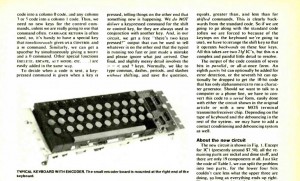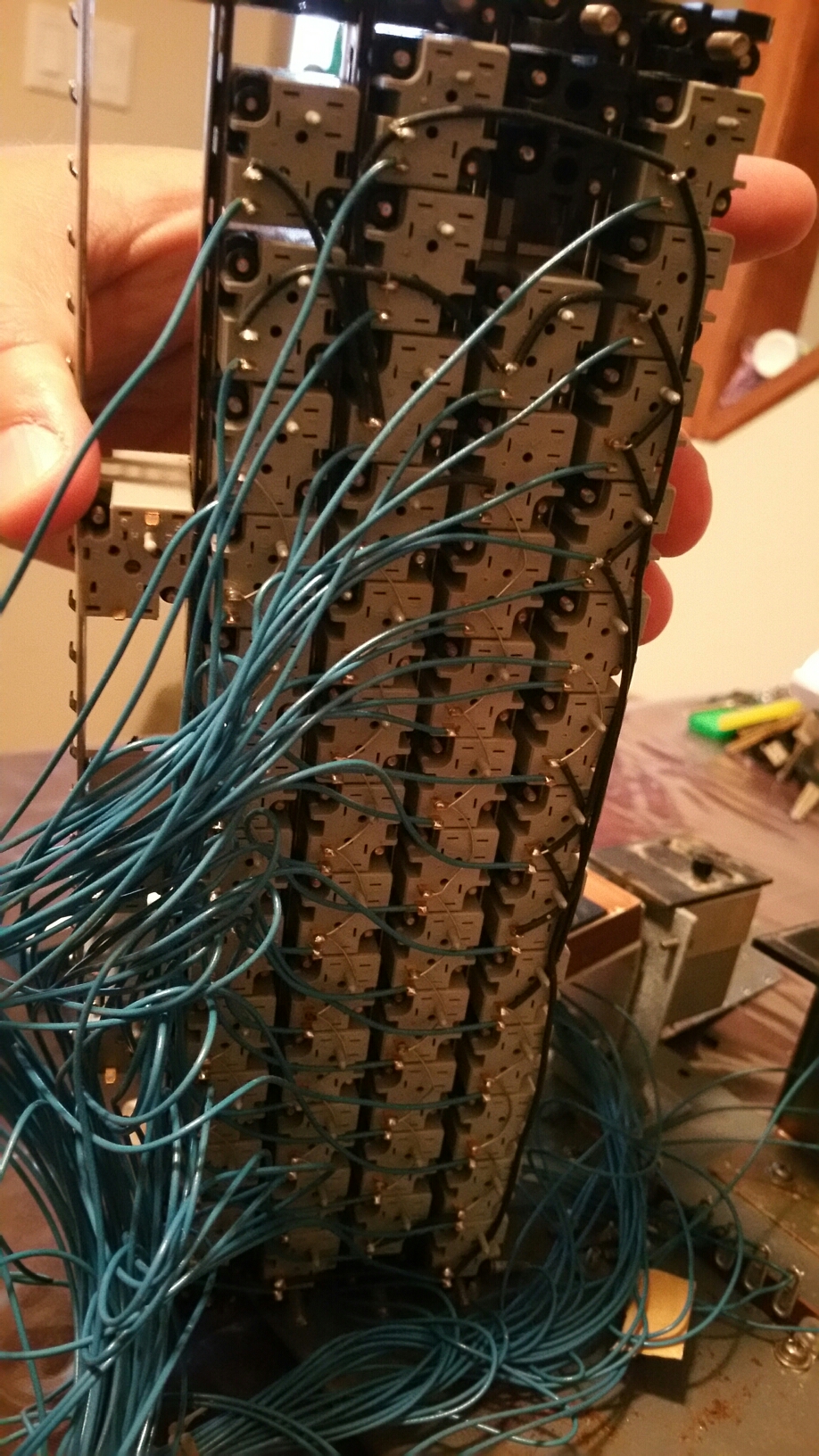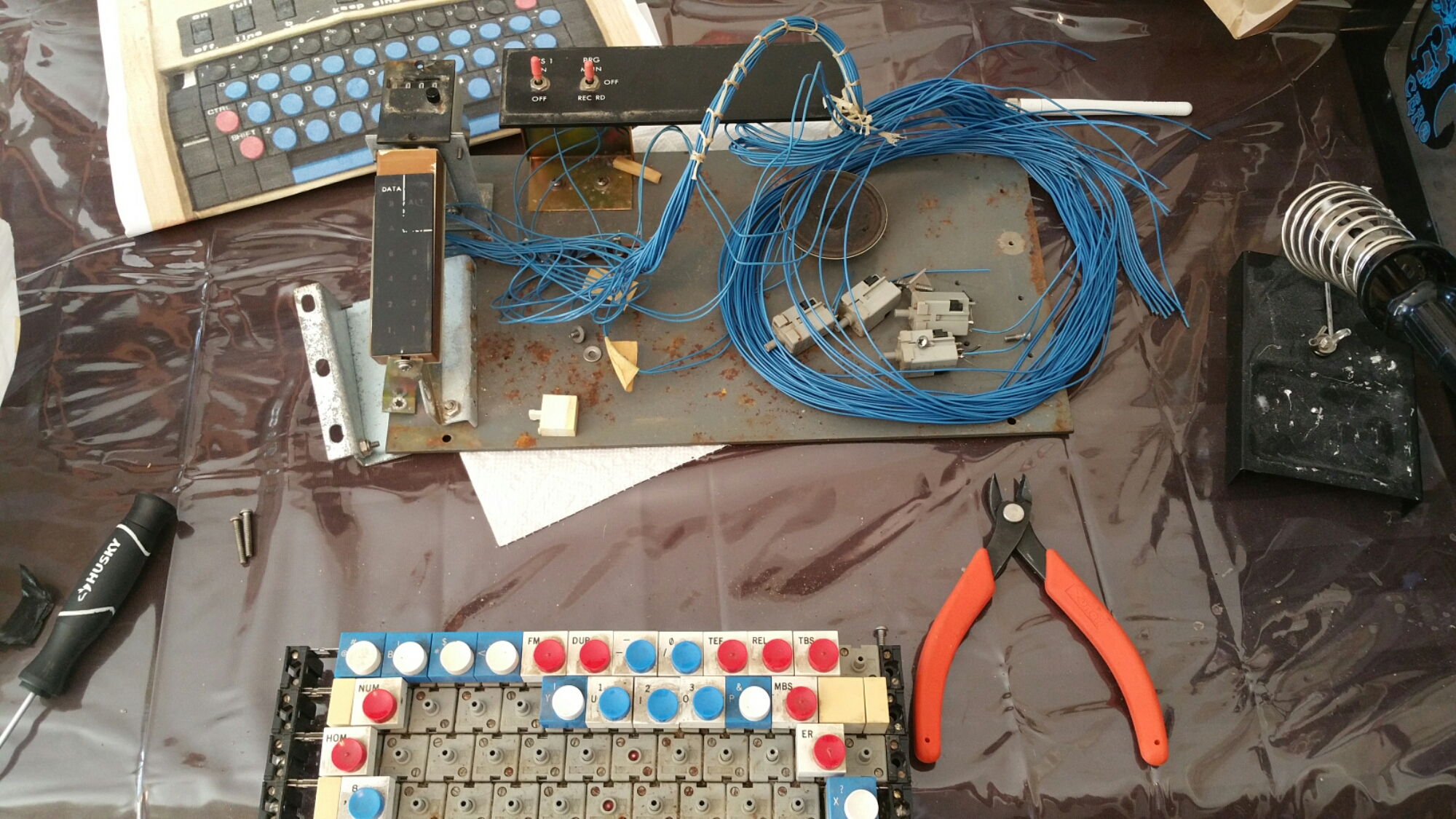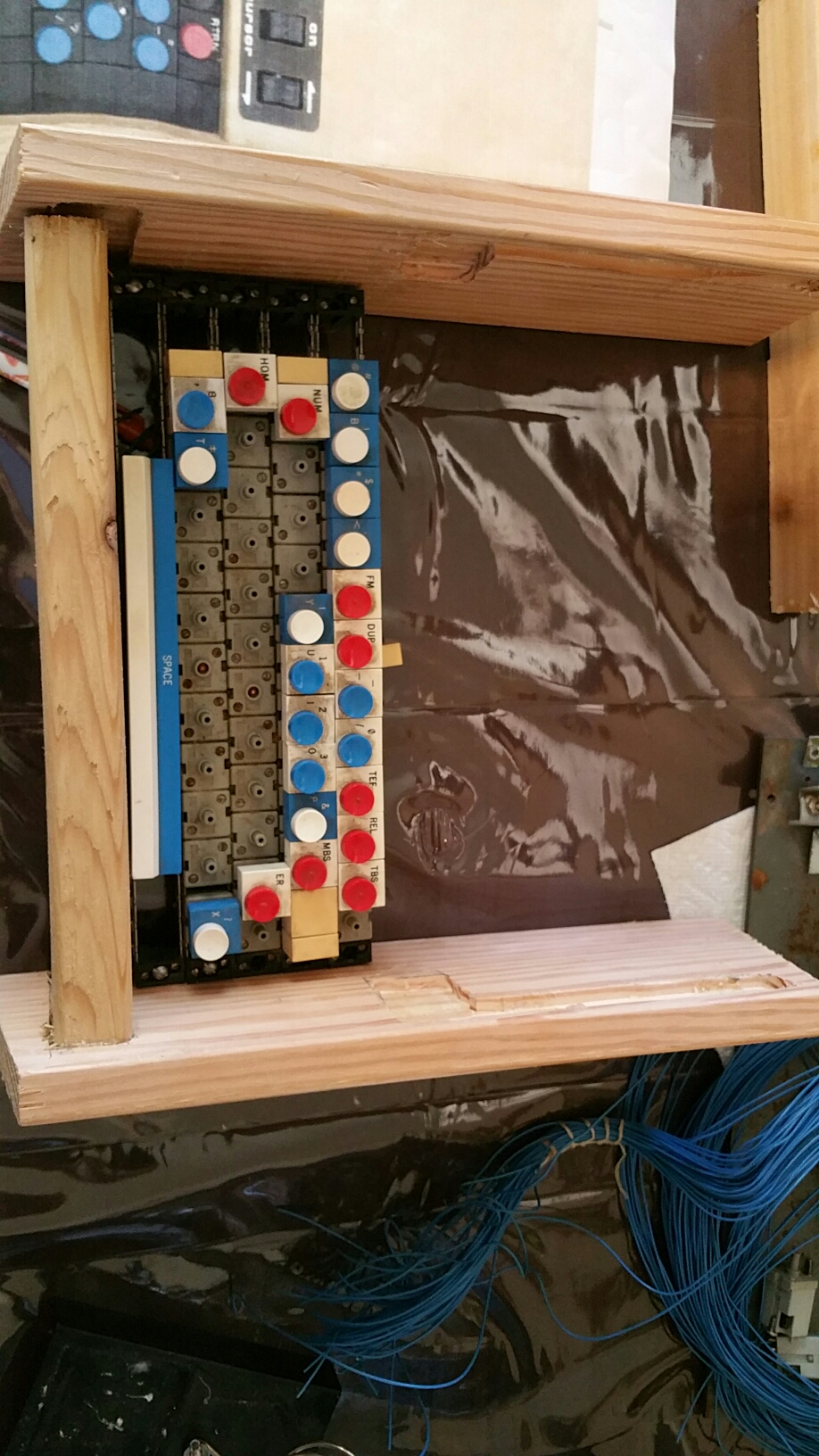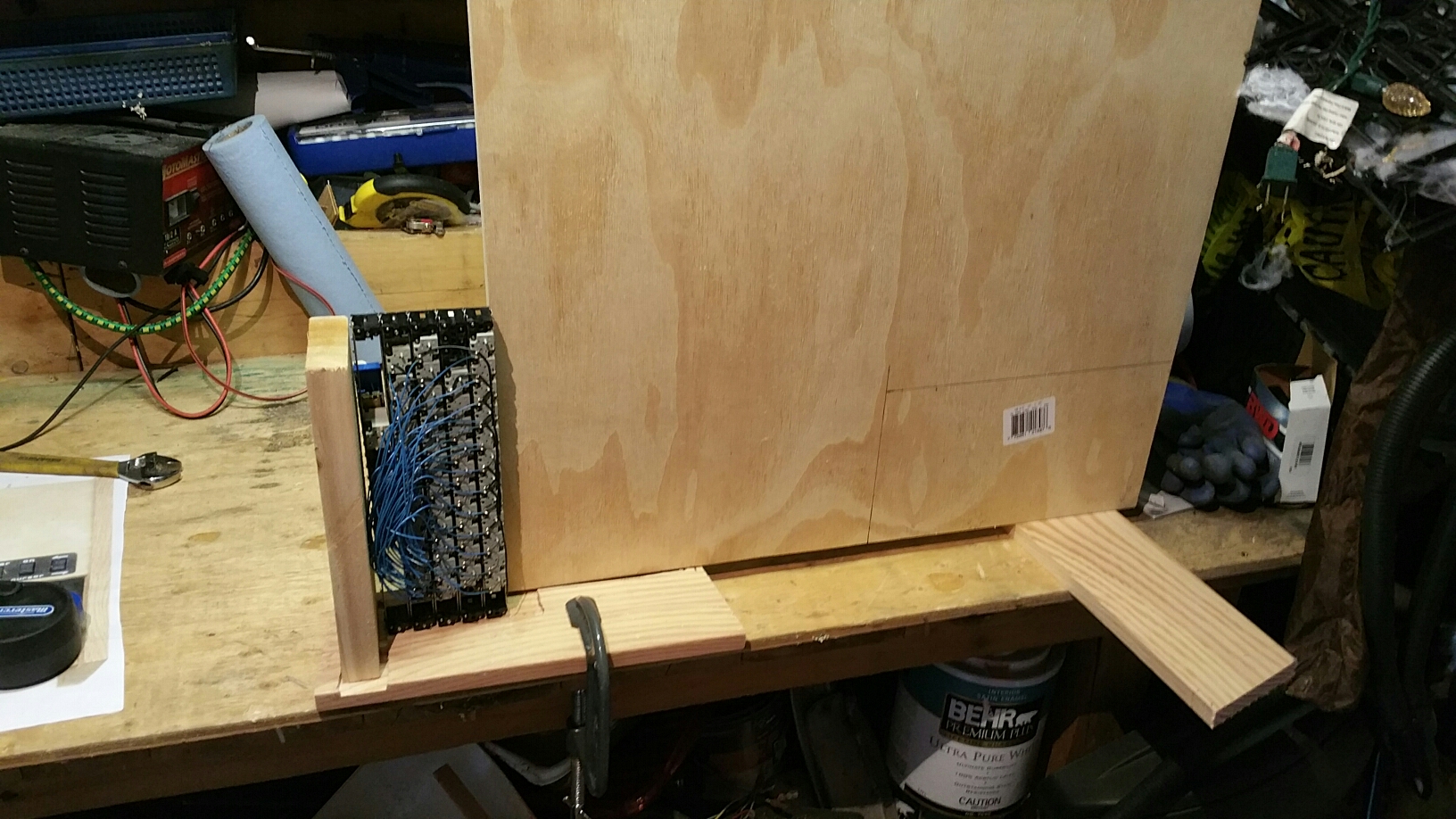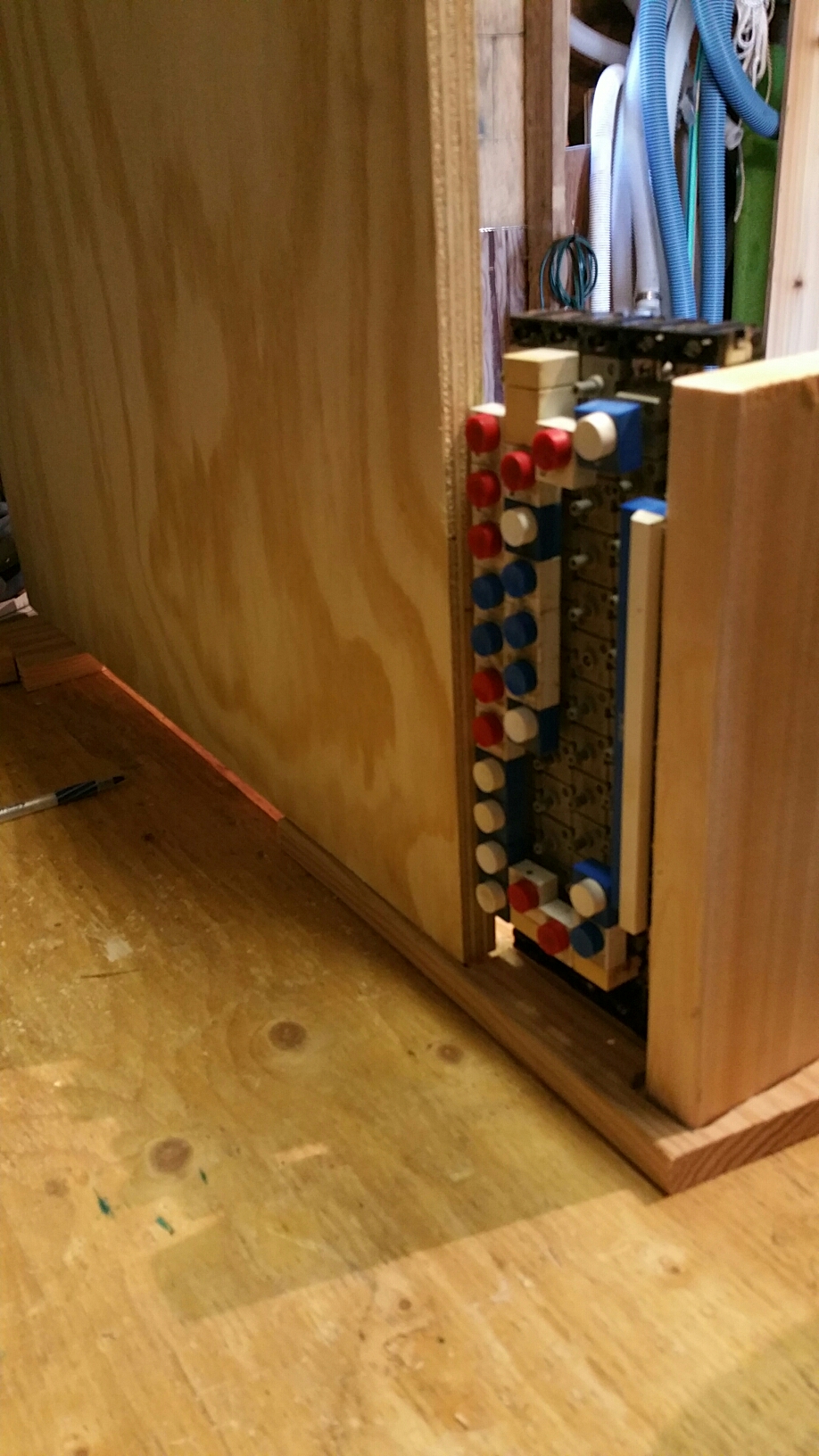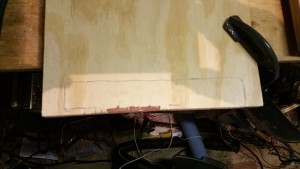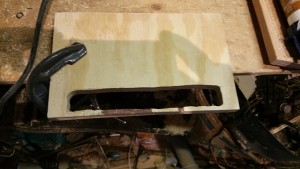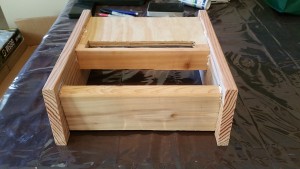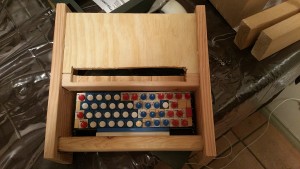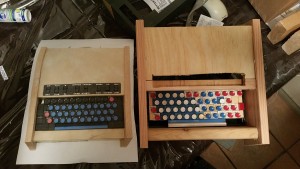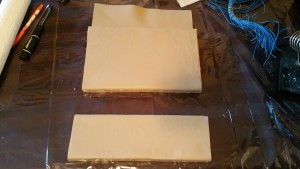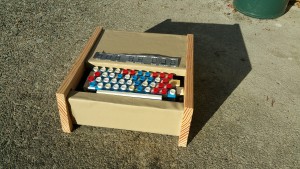I haven’t been posting but I have been doing, sort of.
I wanted to get going and build an externally complete mockup of Don’s TVT prototype, so that I could have it on my desk to inspire and motivate me to keep working at it.
One of the problems with trying to replicate something you have no physical access to is that, the more you research, the more you find out that changes your assumptions. When I got my Mohawk keyboard, I assumed by the keytops and arrangement of keys alone I had the right beast. But looking around online I stumbled across a couple of pics where one of the plastic ‘bezel’ blocks Don used around the periphery of his keyboard (to cover up the workings underneath) had gone missing and the others had slid around. They revealed a metal slotted bracket. This was not the same as the one on my Mohawk, which led me to wonder — did I have the right keyboard?
I needed to find a pic of the so called ‘surplus’ keyboard outside of the TVT unit. Hunting around www.tinaja.com, I discovered this article Don had written detailing his ‘improved ASCII encoder’. Check this out:
Look familiar? This article appeared in 1974 and featured a revised ASCII encoder from the original used in the TVT. For this version, they mounted the encoder beside the keys on the right side. Now, the width of the prototype is known — the museum gave that to me. The keyboard pictured as I said is post-TVT and the encoder Don’s attached to the rails on the right side make it too wide to fit. But the flange looks the same. So what’s up?
As it turns out, the answer is fairly simple. Both mine and Don’s keyboard were ultimately made by the same company: Micro Switch of Freeport, IL. Micro Switch is pretty prolific. I’ve actually got an ebay search followed and have seen tons of their former products go onto market. Micro Switch produced keyboards like ours for Mohawk, Honeywell and others. From what I’ve been able to dig up, it appears Don’s units may have come from decommissioned Honeywell machines – I’ve seen a few with different coloured keys but the same flanges on the sides. My keyboard’s switches date to late 1967, so that kind of explains why they were surplus in 1973.
Now, here’s where I get into a battle with my inner historian. When Don was building his keyboards, these Micro Switch units weren’t rare at all. They were literally being dumped. However, here in 2016 these are a lot rarer. In 7 years of watching around, I’ve only seen mine and one other appear on ebay. Because the legends on mine are white and I only have a handful of blue keys, to get the black and blue coloration Don had, that means I have to paint. And paint, as they say, is forever. Ugh! What to do!
Well, I guess while I have that debate I can at least take it apart. That is reversible, and it’ll let me do a mockup of my unit and figure a few things out about my case design. So.. here we go…
The switches are held in place on their rails by two screws up top. Loosening the screws a little is all it takes to be able to move them. I had to cut the mass of wires shorter to work with it, which was in itself painful but — well, it’s not like they had their original connector at the other end anyway, they were cut at about 2 feet or so. After, I remove several switches to get the number of keys the same as Don’s, then begin to try to rearrange them get the pattern Don had. The basic pattern is already there for the most part. It’s just dropping switches from the right and filling in the blanks with the spacers.
With the pattern figured out, I proceed to test fitment. It appears I will have to router into the left side a bit more deeply than right to compensate for the keyboard having more exposed rail on that side.
I also work to get the plywood top omin place.
Ok.. need to trim this down a little…
Good.. now to cut the opening for keyswitches..
Meh. My routering skills are a bit unpolished. But whatever, it’s a mockup. Alright.. now a bit of glue to see how it goes together:
Not bad. Now to router out the sides for the keyboard and try placing it.
Hey! This thing’s actually starting to look like a TVT.. here’s mine next to my not quite life-size photo of the original:
Now the moral crisis. I’m tempted to ‘leave them keys alone’. You know, authentic recreation rather than replica. But of course, if I’m not going to build an actual replica.. what was the point again?
While internally debating that situation, I decided to hunt down some appropriate vinyl. The vinyl Don used was 1970s faux leather, I think. Finding the exact colour and pattern would be very difficult, since it was probably long discontinued. Further complicating matters, photos play tricks on you. In some photos the vinyl on the prototype looks beige, in others, gold.
I just want to get my mockup built and then do some more photo comparisons. I found some beige-ish vinyl at a Fabricland store in West Vancouver. It looked kind of close. I think Don’s may have been that fake ‘distressed’ leather, although maybe the distress had happened over the course of 40 years. This vinyl is a bit too polished, but that’s okay. Again, it’s just temporary to check things out.
Getting out my ever trusty No More Nails, I began to put the case and rearranged keyboard together. I ended up having to go deep into the left side to get the keyboard centered correctly, and then had to prop it on the right side with a little shelf. Here’s the end result (with a printed pic of the switches to stand in for the real ones for now):
Not bad at all, if I do say so. Okay. Time to sleep on the paint thing and decide if I have the stones to go all the way on this.

